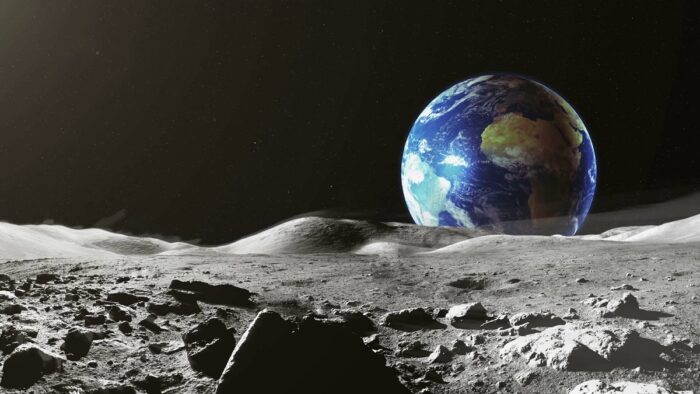Although there is water on the moon, it is not stored in convenient reservoirs, but locked in the lunar soil. Now, a new study explains that thirsty astronauts could one day refresh themselves quite easily – by throwing a cup of lunar soil into the microwave.
Over the past decade, there has been increasing evidence of water on the Moon bound between grains of surface lunar dust known as regolith. It is estimated to be between 100 and 400 parts per million, with higher concentrations at the poles, where frozen deposits form in places that never receive direct sunlight.
This means that future manned missions to the moon could pack a little lighter – but how will they be able to squeeze drinkable water out of it? A new study by scientists from the Open University and the University of Central Florida has shown that it can be done with a regular microwave oven.
The team started with two different versions of simulated regolith based on samples returned from the Apollo missions – one with the composition of the lunar highlands, and one that mimics the dark soils of the plains. They then mixed deionized water to make up between 3% and 15% of the weight of each sample, matching the range of water content estimated in previous studies.
These samples were then placed in crucibles lined with ceramic paper and placed in a chamber that simulated the pressure and temperature of the lunar surface. They were then heated for 25 minutes in 250W microwaves, which is less than the power of your kitchen microwave.
And, of course, the technique was able to squeeze a decent amount of water out of the samples. More than 50% of the water present in the plains-simulating samples and more than 67% from the highland regolith were extracted. When heated for 35 minutes, it was possible to extract up to 90% of water.

However, contrary to expectations, the wettest samples were the worst: the amount of extracted water in them decreased to 32%. The study suggests that when the richer regolith freezes, the expanding ice pushes the dust particles further apart, weakening the heat exchange between them and making water extraction less efficient.
The team says that low-power microwave installations could be used by astronauts to extract water from areas with relatively little water content, less than 10% by weight.

